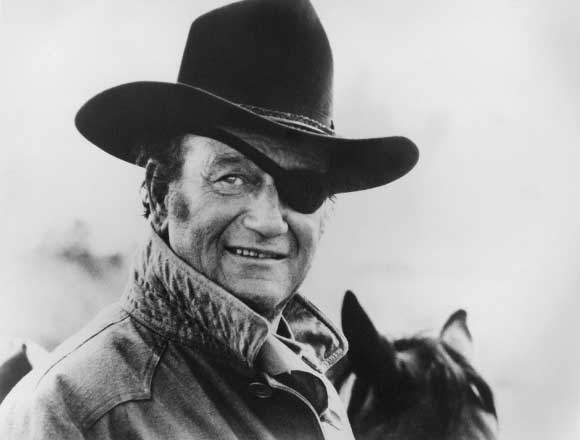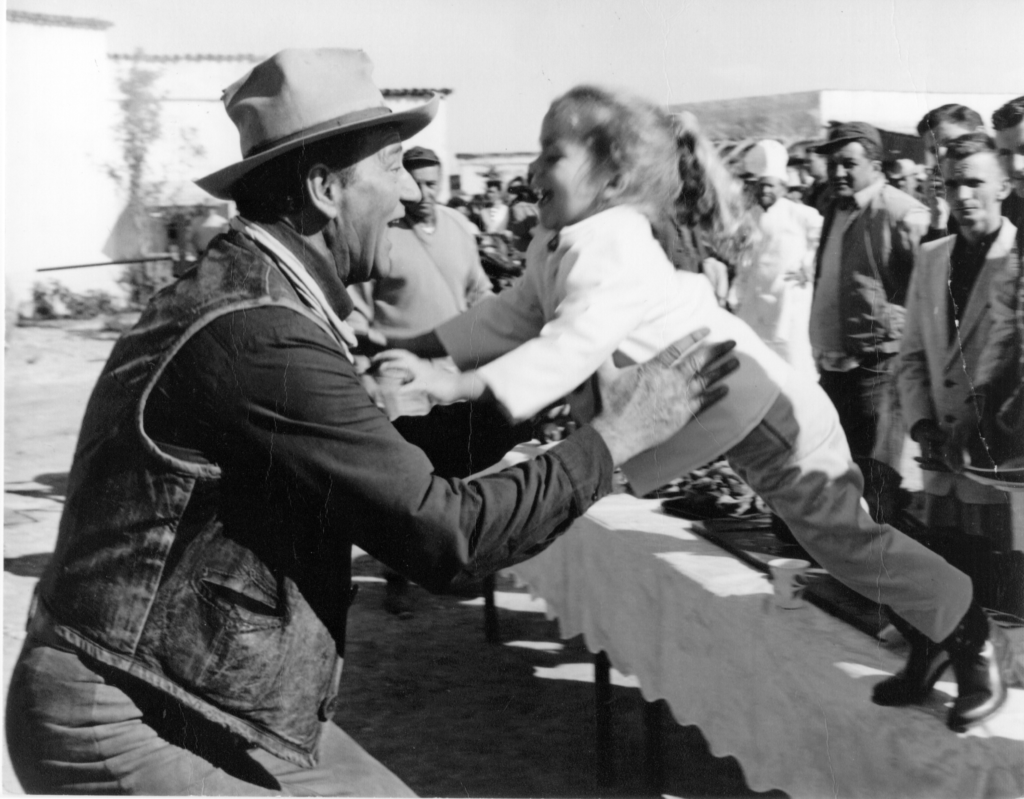
Behind the scenes with Wyatt Earp, John Wayne and an only-in-Hollywood tale.
Written by Jenn Thornton
Given the lawmen that John Wayne played during his career as one of Hollywood’s most bankable stars—most famously, the cantankerous, one-eyed U.S. Marshal Rooster Cogburn in True Grit (1969)—it is somewhat astonishing that he never portrayed American West icon Wyatt Earp. Big boots to fill, but the OK Corral gunfighter seems a character tailor-made for the swaggering, swashbuckling Wayne. And yet, their paths never crossed.
Only, a long-held Hollywood fable holds otherwise. As this story goes (and it goes a few different ways depending on who is doing the telling), a young Marion Morrison, while working as a prop man at Fox, met the aging Earp on the set of an early Western. The old man is said to have captivated the Hollywood upstart with tales of his Wild West exploits. None of this is tooterribly outlandish. But it is not likely, either—nor is it probable that, in an addendum to the tale, Wayne was all the while fetching coffee for Earp while hanging on his every word. But then, Hollywood loves a good story.
It’s true that Wyatt Earp did indeed come to Hollywood. But why? Had he not had enough drama in the likes of Deadwood, Dodge City, and Tombstone? Turns out, Hollywood was a bit of a backwater back in the day, providing refuge and few rules to all kinds of dubious folks. Wyatt made the rounds in this murky world of the morally ambiguous and is said to have served as a technical advisor on early Westerns. He eventually started hob-knobbing with a few of their prominent stars, including Tom Mix and William S. Hart. Both men are reported to have been pallbearers at Earp’s funeral in 1929. The same is said about John Wayne, but… well, they say a lot of things.
Even the Duke’s friend John Ford was taken with Wyatt Earp mythology. His 1946 film My Darling Clementine was inspired by Earp’s time in Tombstone. Loosely, though, because—and this is how it goes in Hollywood—we only have Ford’s word for it. And the filmmaker claimed that he staged the film’s infamous gunfight based on what he heard from Earp himself. Could it be that Ford spun all this up to put more moviegoers in the seats? Possibly. But that’s the West—truth and fiction. In his review of the film, late film critic wrote of Ford, “He made dozens of silent Westerns, met the real Wyatt Earp on the set of a movie and heard the story of the OK Corral directly from him (even so, history tells a story much different from this film).” Weirdly to some, Ford sidelined Wayne for the role.

John Wayne on the set of The Alamo with his daughter Aissa.
Wayne did, however, play other real-life figures ranging from Davy Crockett in The Alamo (1960) to Gen. William Tecumseh Sherman in How the West Was Won (1962), so one wonders what he would have done with Wyatt Earp. No doubt holding his ground and giving no quarter. But Wayne did emulate Earp in other ways. As he is quoted as saying, “Earp was the man who had actually done the things in his life that I was trying to do in a movie. I imitated his walk; I imitated his talk.” No one in Hollywood has yet to replicate Wayne, though—those boots are hard to fill, too.
Photographs courtesy of John Wayne Enterprises


